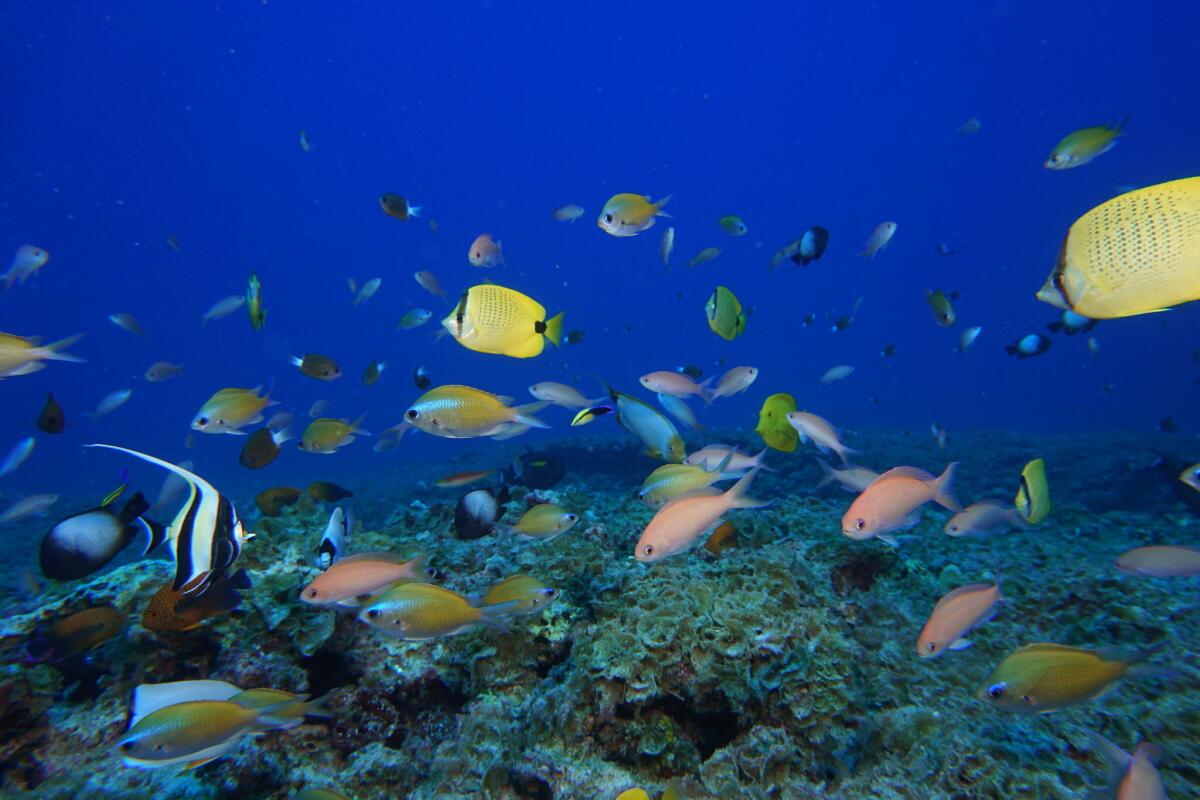World isnât meeting biodiversity goals, U.N. report finds

A decadelong global effort to save Earthâs disappearing species and declining ecosystems has mostly stumbled, with fragile habitats like coral reefs and tropical forests in more trouble than ever, researchers said in a report Tuesday.
In 2010, more than 150 countries agreed to goals to protect nature, but the new United Nations scorecard found that the world has largely failed to meet 20 different targets to safeguard species and ecosystems.
Six of those 20 goals were âpartially achieved,â and the rest were not.
If this were a school and these were tests, the world has flunked, said Elizabeth Maruma Mrema, executive secretary of the U.N. Convention on Biological Diversity, which released the report.
Toward a more sustainable California
Get Boiling Point, our newsletter exploring climate change, energy and the environment, and become part of the conversation â and the solution.
You may occasionally receive promotional content from the Los Angeles Times.
Inger Andersen, who leads the U.N. environment program, called it a global failure.
âFrom COVID-19 to massive wildfires, floods, melting glaciers and unprecedented heat, our failure to meet the Aichi [biodiversity] targets â protect our our home â has very real consequences,â Andersen said. âWe can no longer afford to cast nature to the side.â
Former U.N. Secretary-General Ban Ki-Moon connected the problems to âa lack of global partnership and political leadership.â He said multilateralism has been under attack, citing the United Statesâ withdrawal from the Paris climate agreement as an example.
How close can U.S. cities, states and companies get to meeting the countryâs abandoned climate goals without help from the federal government?
The U.N. team and report authors said the study is not meant to stoke despair, but to galvanize governments to take stronger actions over the next decade to protect the diversity of life.
âSome progress has been made, but inadequate progress. A lot still needs to be done,â Mrema said. âThe key is to get the political will and the commitment.â
Duke University ecologist Stuart Pimm, who was not involved in the new report, said itâs good that countries are getting together to examine their biodiversity goals but that some of the targets are nebulous. Reducing âeverything on the planet to single scoresâ obscures the fact that the picture may look different in different places, he said.
For years, conservation activists have used the polar bear as a poster child for species in trouble â especially those threatened by climate change, which the report connects to biodiversity loss. But Mrema and lead author David Cooper said the world should think about a different poster animal: humans.
âA lot of things civilizations depend on are certainly threatened,â he said.
The report was originally slated to be released at a U.N. conference where biodiversity targets would be set for the next decade, but the event in Kunming, China, was postponed until next year due to the COVID-19 pandemic.
Last week, the World Wide Fund for Nature released new research detailing how monitored populations of mammals, birds, amphibians, reptiles and fish have declined by 68% on average from 1970 to 2016.
âWith pandemic deaths surging and wildfires raging across the entire West Coast, never have the consequences of our misuse and abuse of the natural world been more clear,â said Julia Baum, a biologist at Canadaâs University of Victoria, who wasnât part of the report.
Researchers and therapists say that grief linked to climate change is on the rise.
As countries prepare to restart their economies after combating the coronavirus, thereâs an opportunity to do better â or much worse â for the planet, Cooper said.
âSome countries are relaxing environmental regulations, but others are investing in a green recovery,â he said.
One of the challenges in meeting global biodiversity targets is a mismatch between countries with abundant natural assets â such as large tracts of intact tropical forests â and those with money to enforce protections.
âThe biodiversity hotspots tend to be in poorer countries,â and wealthy countries need to be willing to provide financial or practical support to help other nations, Cooper said.

Dalhousie University marine biologist Boris Worm, who also wasnât part of the report, said the world is at a crossroads.
âWe still have the chance to save most of the worldâs endangered species and vulnerable ecosystems,â Worm said. âNow we face a historic choice to either seize this opportunity, and rebuild what has been lost, or to let the worldâs species slide further into oblivion.â
He said itâs striking that Earthâs biodiversity took millions of years to evolve, âyet we could destroy much of it in a matter of decades â or safeguard it for generations to come.â
âItâs our choice,â he added.








